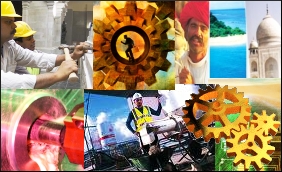|

|
Twenty years on, hopes high on next phase of economic reforms
|
|

|
|
| Top Stories |
 |
|
|
|
James Jose and Gyanendra Kumar Keshri | 26 Jul, 2011
With economic reforms in India exactly 20 years old, unleashed with the famous budget speech of Prime Minister Manmohan Singh July 24, 1991 when he was finance minister, hopes run high on a re-awakening to push Version 2 of liberalisation.
In the past 20 years, economists maintain, India has, indeed progressed. But challenges remain, especially in lifting the teeming millions out of poverty, despite the slogans of "inclusive growth" chanted by successive governments since the mid-1990s.
In fact, there is also a crisis of sorts, be it in the quality of governance, what with a spate of alleged scams, the ugly face-offs between the government and the opposition, which is holding back key legislation, or the conduct of corporate sector.
"There is a slowdown in industrial growth and investment. Economic reforms are needed to reverse the trend," said Rajiv Kumar, secretary general of the Federation of Indian Chambers of Commerce and Industry.
"Reforms in insurance, banking, pensions, taxation and land acquisition - each of them are important and needed to be pushed. I think that a push to reforms is the intention of the prime minister," Kumar told IANS.
Statistics, in fact, present a mixed picture. After years of robust expansion, factory output growth fell to a nine-month low of 5.6 percent in May. Foreign direct investment inflows fell 25 percent to $19.42 billion in 2010-11 and inflation remains a nightmare.
Key economic reforms also remain, notably a new direct tax code, goods and services tax, banking, insurance and pension regulations, a fresh industrial policy and fresh norms on farmland acquisition -- indecisiveness on which have caused much unrest.
Yet, the country's savings and investment rates -- two key indicators on the capacity to push for high growth -- are at an enviable 34-35 percent and 36-37 percent of the gross domestic product (GDP), respectively.
"Reforms have to be pushed to keep the growth momentum. There is no alternative," said Chandrajit Banerjee, director general of the Confederation of Indian Industry. "I am glad the government is listening to us and has started the process. It is great."
Another positive indicator has been the findings of the National Sample Survey of India which shows real incomes, both in the hinterland and in urban areas, have grown and people below the poverty line have fallen to around 32 percent.
This apart, economic growth has been hovering around 8 percent for some years now, there are some 850 million mobile phones and even the middle class today has started using air transport thanks to a host of budget carriers.
Yet, tens of thousands of villages out of some 626,000 remain without electricity, tap water and sanitation, while decent healthcare services and even nominal social security remains out of reach for the majority of India's 1.2 billion citizens.
Looking ahead, however, analysts see some hope.
A hint that the government intends to push reforms also came from a decision taken by a group of bureaucrats, led by Cabinet Secretary A.K. Seth last week, recommending up to 51 percent foreign equity in multi-brand retain trade business.
"Business confidence was low. No major decisions were taken in the past several months. This will send a positive signal to investors in all segments," maintained D.S. Rawat, secretary general of the Associated Chambers of Commerce and Industry (Assocham).
Analysts concede that since many of the items on the reforms agenda require legislative sanction, it is equally important to carry the opposition along. But that is something over which there appears to be little progress.
Late last month, the prime minister even accused the opposition Bharatiya Janata Party (BJP) of playing politics and blocking key economic reforms, hoping key legislation in areas such as insurance, pension and taxation would be passed soon.
"The consensus that emerged until a few months ago on the good and services tax -- the BJP is clearly playing politics. They do not want the government to pass this landmark legislation," he had said during an interaction with a group of editors.
Analysts like Jay Shankar, chief economist with financial services major Religare felt the focus of the government was on appeasing all, like most democracies. "I do hope the government starts looking beyond the political issues to focus on development."
|
|
|
| |
|
|
|
|
|
|
|
|
|
|
|
|
|
|
| |
| Customs Exchange Rates |
| Currency |
Import |
Export |
US Dollar
|
84.35
|
82.60 |
UK Pound
|
106.35
|
102.90 |
Euro
|
92.50
|
89.35 |
| Japanese
Yen |
55.05 |
53.40 |
| As on 12 Oct, 2024 |
|
|
| Daily Poll |
 |
 |
| Do you think Indian businesses will be negatively affected by Trump's America First Policy? |
|
|
|
|
|
| Commented Stories |
 |
|
|
|
|
|
| |
|